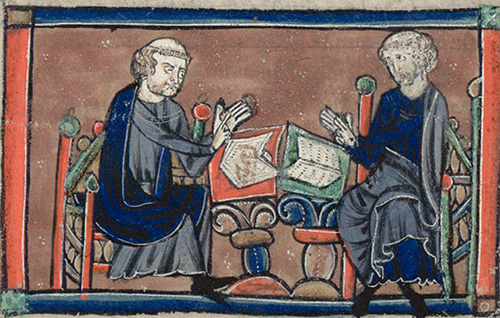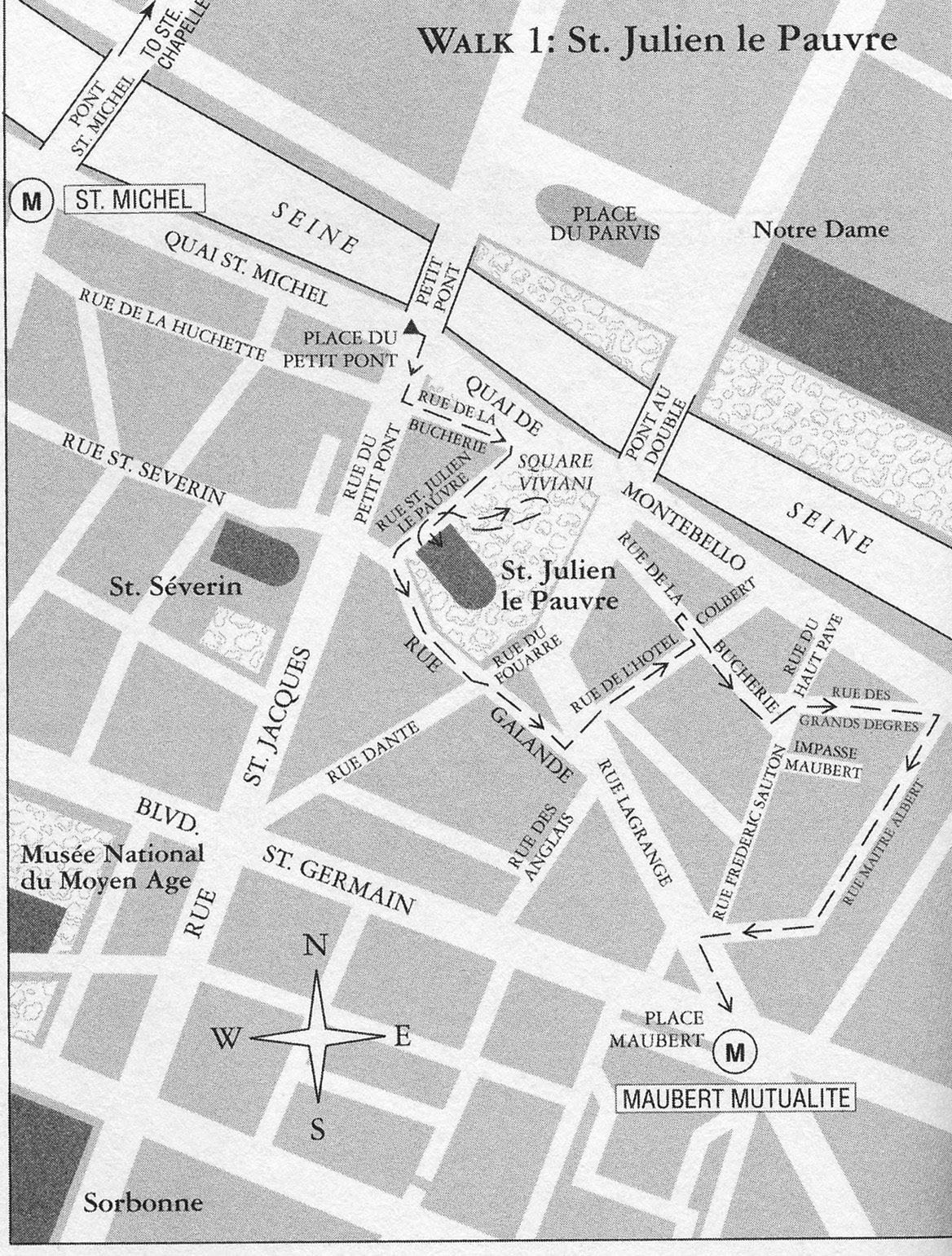Student Life on the Street of Straw
Sonia, Alison, and Rebecca Landes, Paris Walks (New York: Henry Holt, 2005), pp.22- 23.
Go up the stairs and cross the square to what is now the rue Lagrange (named after the great mathematician and astronomer who helped invent the metric system during the French Revolution) , which starts at the quai and then bends toward the place Maubert. The rue, from the quai to the bend, adjacent to the park, has swallowed what was once the rue du Fouarre , of which only a little leg is left, connecting the rue Lagrange and the rue Dante. In the Middle Ages this was a narrow way, lined solid with student housing, and its animation and intellectual activity made it one of the most famous streets in Europe. Classes were held in the open air, with the students sitting on the ground and not on benches, in order that, as a document of Pope Urban V in 1366 put it, "occasion for haughty pride be kept away from youth ." The ground was always filthy and often damp, so the students spread straw to sit on. The Old French word for straw is feurre or fouarre , close to the English word forage. Hence the name of the street, originally named the rue des Ecoliers, after the students.
during the French Revolution) , which starts at the quai and then bends toward the place Maubert. The rue, from the quai to the bend, adjacent to the park, has swallowed what was once the rue du Fouarre , of which only a little leg is left, connecting the rue Lagrange and the rue Dante. In the Middle Ages this was a narrow way, lined solid with student housing, and its animation and intellectual activity made it one of the most famous streets in Europe. Classes were held in the open air, with the students sitting on the ground and not on benches, in order that, as a document of Pope Urban V in 1366 put it, "occasion for haughty pride be kept away from youth ." The ground was always filthy and often damp, so the students spread straw to sit on. The Old French word for straw is feurre or fouarre , close to the English word forage. Hence the name of the street, originally named the rue des Ecoliers, after the students.
Classes were taught by such notables as Peter Abelard and Albertus Magnus . At a later date, Dante Alighieri, whose street begins where the present rue du Fouarre ends, studied here. In his Paradiso, Dante refers to the vico degli strami (road of straws) (10: 137) and speaks of the violent discussions he shared in and listened to there.
When the rue du Fouarre was in effect the campus of the Université de Paris, the students lived in dormitories called collèges in the square René-Vivandi. Each dormitory represented a different "nation," and collectively they constituted the College of Nations. In the thirteenth century these were Normandy, Picardy, France, and England. In time these proliferated, and all European and even some Asian countries were represented in Paris. Thousands of students and hangers-on filled this area .
Vagabonds sleeping on the students' beds during the day and high life among the students and their clashes with the citizens gave the street a bad reputation . In 1358, Charles V, then regent, was forced to chain the street at both ends to keep it closed at night. Today the old road is a wide thoroughfare , and the rush of cars crossing from the Left Bank to the Ile de la Cite is continuous.
